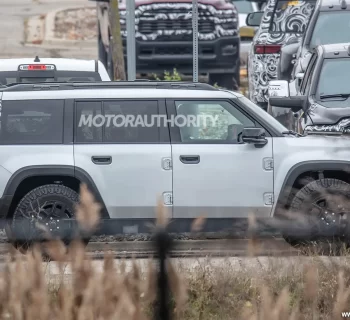- A new study by automotive research firm iSeeCars puts Tesla at the top of the list of automakers with the most frequent occupant fatalities.
- Both the Model Y and Model S are several times more susceptible to fatal accidents than an average car or SUV.
- Teslas have top crash safety ratings from the Insurance Institute of Highway Safety (IIHS). But distracted driving is a growing headache.
Engineering breakthroughs and improved chassis designs have made cars structurally safer than ever. Cars nowadays come loaded with standard safety features like multiple airbags, advanced cameras and sensors that can monitor surroundings and step in during emergencies.
However, a new report highlights a troubling trend: rising levels of distracted driving undermine these safety gains and Tesla appears to be the most affected.
Automotive research and data analytics firm iSeeCars said the Tesla Model Y has a fatal accident rate of more than three times the average car over a billion miles driven. The Model S is twice more likely to result in a fatal crash than the average car.

The firm analyzed data from the National Highway Traffic Safety Administration's Fatality Analysis Reporting System. It included model year 2018-2022 cars with crashes that resulted in at least one occupant fatality to identify the most dangerous vehicles.
Despite being awarded the IIHS Top Safety Pick+ label, the Model Y has a distracted driver problem.
“New cars are safer than they’ve ever been,” said Karl Brauer, iSeeCars Executive Analyst. “Between advanced chassis design, driver assist technology and an array of airbags surrounding the driver, today’s car models provide excellent occupant protection,” he added.
“But these safety features are being countered by distracted driving and higher rates of speed, leading to rising accident and death rates in recent years.”
We'd love to hear from you.
Do you drive a Tesla or work at the company and have things to share? We're happy to chat securely and anonymously from a non-work device. Reach out to the author at suvrat.kothari@insideevs.com.
Tesla’s advanced driver assistance systems, Autopilot and Full-Self Driving (both Level 2 systems requiring active driver supervision), are under investigation by the NHTSA for links to crashes and fatalities.
Misleading labels like “Full-Self Driving,” touchscreen-centric controls and driver complacency have raised growing concern over safety. While Teslas and most cars with ADAS include infrared driver-monitoring cameras, they’re far from foolproof.
AI and automation scientists have told InsideEVs that Tesla's approach with FSD, which also underpins its future Robotaxis, has severe drawbacks.
Tesla has the highest fatal accident rate of all car brands, followed by Kia, Buick, Dodge and Hyundai, iSeeCars said. “The biggest contributor to occupant safety is avoiding a crash and the biggest factor in crash avoidance is driver behavior," Brauer said.

Photo by: Ford
"A focused, alert driver, traveling at a legal or prudent speed, without being under the influence of drugs or alcohol, is the most likely to arrive safely regardless of the vehicle they’re driving."
The car that topped the occupant fatality rate isn’t even electric. It’s Hyundai Venue, which reportedly has a fatal accident rate of 13.9 deadly crashes per billion miles driven, followed by the Chevy Corvette and the Mitsubishi Mirage.
While this study only mentions fatalities among occupants, distracted driving has consequences beyond that. Using smartphones and over-relying on ADAS for things they aren't engineered to do is also causing more pedestrian deaths, studies have shown.
ADAS works best when it's constantly supervised. InsideEVs testing has shown that ADAS reduces driving stress when used as intended—with supervision, without distraction and with immediate readiness to resume control. Without all of that, it risks doing more harm than good.
Source link
Discover more from Autojunction
Subscribe to get the latest posts sent to your email.





